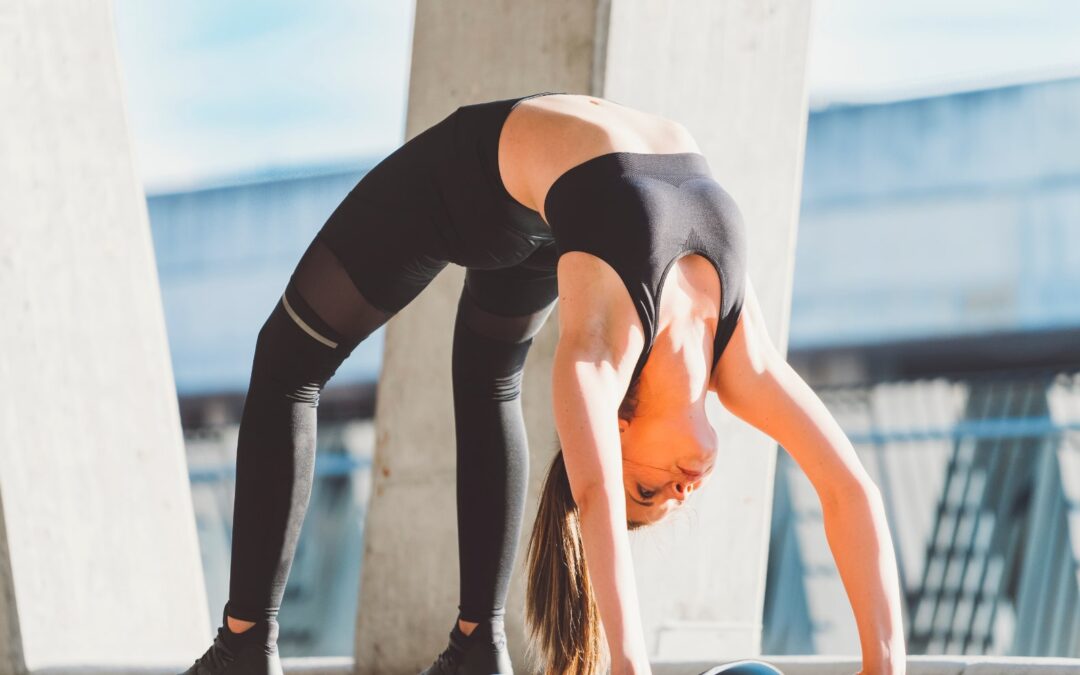When it comes to the Big Three of exercise – cardiovascular, strength and flexibility training – it’s pretty clear which one can get overlooked. After all, while we prize cardiovascular and strength training for their role in helping us lose weight, build muscle and get fit, the benefits of flexibility training are less immediately alluring. So, why stretch? About.com answers that well:
- You’ll improve your performance and reduce your risk of injury
- You’ll reduce muscle soreness and improve your posture
- You’ll help reduce lower back pain
- You’ll increase blood and nutrients to the tissues
- You’ll improve your coordination
- You’ll enjoy exercise more and help reduce stress
As the population ages, more of us are learning to appreciate the rewards of stretching. Staying limber can offset age-related stiffness, improve athletic performance, and optimize functional movement in daily life. Research shows that flexibility training can develop and maintain range of motion and may help prevent and treat injury. In fact, the American College of Sports Medicine has added flexibility training to its general exercise recommendations, advising that stretching exercises for the major muscle groups be performed two to three days per week. How can you include an effective flexibility workout in your fitness program?
- Think in Terms of Serious Flexibility Training, Not Just Brief Stretching.
Squeezing in one or two quick stretches before or after a workout is better that nothing, but this approach will yield limited results. What’s more, generic stretches may not be effective for your particular body. The more time and attention you give to your flexibility training, the more benefits you’ll experience. A qualified chiropractor, personal trainer, physical therapist or health professional can design a functional flexibility program specifically for you.
- Consider Your Activities. Are you a golfer? Do you ski, run or play tennis? Do your daily home or work routines include bending, lifting or sitting for long periods? Functional flexibility improves the stability and mobility of the whole person in his or her specific environment. An individualized stretching program is best to improve both stability (the ability to maintain ideal body alignment during all activities) and mobility (the ability to use full, normal range of motion).
- Pay Special Attention to Tight Areas. Often the shoulder, chest, hamstrings and hips are particularly tight, but you may hold tension in other areas, depending on your history of injuries and the existing imbalances in your muscle groups. Unless you tailor your flexibility training to your strengths and weaknesses, you may stretch already overstretched muscles and miss areas that need training.
- Listen to Your Body. Stretching is an individual thing. Pay attention to your body’s signals and don’t push too far. Avoid bouncing or jerking movements to gain momentum; this approach can be dangerous. Instead, slowly stretch your muscles to the end point of movement and hold the stretch for about 10 to 30 seconds. Older adults, pregnant women and people with injuries will need to take special precautions.
- Get Creative. Varying your flexibility training can help you stick with it. You can use towels, resistance balls and other accessories to add diversity and effectiveness to your stretching.
- Warm Up First. Don’t forget to warm up your muscles before you begin. Walking briskly for 10 to15 minutes is a simple way to do this.
- Find a Flexibility Class That Works for You. Classes that include stretching are becoming more popular and more diverse. Some combine cardiovascular and strength components with the flexibility training; others focus exclusively on stretching.
- Stretch Your Mind and Body. Did you know that your emotional state may affect your flexibility? If your body is relaxed, it will be more responsive to flexibility training. Listening to music and focusing on your breath can help you relax as you stretch. You may also want to explore yoga or Pilates. In addition to stretching, classes in these disciplines may include relaxation, visualization and other mind-body techniques designed to reduce stress and increase mindfulness.
- It’s Not Just for Wimps. Forget the idea that stretching is just for elderly, injured or unconditioned people. Many Olympic and professional athletes rely on flexibility training for peak performance.
- Do It Consistently. It doesn’t help to stretch for a few weeks and then forget about it. Integrate regular stretching into your permanent fitness program. For inspiration, look to cats and dogs – they’re dedicated practitioners of regular stretching and you rarely see them getting the kind of joint or muscular injuries that humans get!
- Getting Started. Your chiropractor is a great resource for functional stretches specific to your needs. Be sure to ask about a customized flexibility program at your next visit.


